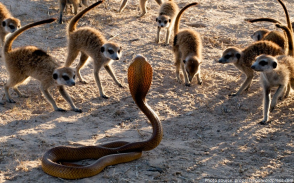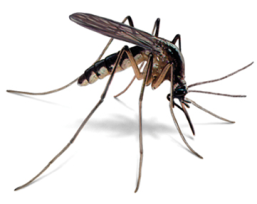 I am just back from work in Southern Africa. And while I was in a specific country with it’s specifically difficult political context, the question that keept us awake at night was rather universal: How can we influence without much formal authority? How can we achieve the greater good (as we define it, anyway), when doing so will cut off streams of illicit benefits for many people in high position?
I am just back from work in Southern Africa. And while I was in a specific country with it’s specifically difficult political context, the question that keept us awake at night was rather universal: How can we influence without much formal authority? How can we achieve the greater good (as we define it, anyway), when doing so will cut off streams of illicit benefits for many people in high position?
Then I found a simple solution, fixed the situation and all is well, world saved.
No, not quite. Rather, I led my participants deeper into the complexity of their challenge (identifying who the actors are, how they are connected, what their influence and goals are, a.k.a. drawing a Net-Map stakeholder map). Then I provided them with guidance to prioritize and strategize for most effectively engaging with their stakeholders.
We divided the stakeholders in
- Elephants: high influence, positive
- Meercats: low influence, positive
- Snakes: high influence, negative
- Mosquitos: low influence, negative, and
- Baboons on the fence: high influence, undecided
And for each, there are a number of strategies to explore:
Elephants: High influence, positive toward your goals

- Give them credit, let them lead
- Frame the issue for them, share information
- Engage consistently, regularly
- Manage possible power struggle between positive high influencers
- Build diverse coalitions:
- Diverse power sources,
- diverse motivations,
- shared goals.
Meercats: Low influence, positive toward your goals

- Can you increase their influence?
- They can be connectors and information gatherers
- They might have helpful friends
- Build coalitions – strength in numbers
- Remember: “A leader without followers is just someone taking a walk”
And, don’t underestimate them: threat or belief can activate unexpected strength -see below, together they can kill a snake…

Snakes: High influence, negative toward your goal

- Watch your back – protect yourself
- Avoid – focus on other issues for now
- Seek unexpected common ground
- Explore their networks: Who do they listen to? Who commands them?
- Explore win-win and trade-offs
- Undermine their narratives
- Weaken their coalitions
Mosquitos: Low influence, negative toward your goal

- What do they care about? Can you entice them to your side?
- Are you sure they are weak?
- Watch out for influence increase over time
- Interfere with their coalition building
- Can you safely ignore them for now?
Baboons on the fence: High influence, undecided about your goal

- What do they care about? Can you entice them to your side?
- Are you sure they are weak?
- Watch out for influence increase over time
- Interfere with their coalition building
- Can you safely ignore them for now?
By grouping our stakeholders according to their influence and their relationship to our goal, we became much more specific when developing engagement strategies. And calling our important stakeholders baboons or meercats also added a level of levity to the discussion that made us breathe more freely under the weight of our near impossible task. What are your strategies for engaging elephants, empowering meercats, swaying baboons, neutralizing snakes and protecting yourselves from mosquito bites? I am sure the above isn’t complete yet, so I am curious to hear from you.
Filed under: Change Management, Corruption, facilitation, fine-tuning implementation, International development, notes from the field, Political Networks, social movements, Social Networks | Tagged: Baboons, Elephants, Influencing without authority, Meercats, Mosquitos, Snakes, Southern Africa, Stakeholder Engagement | 2 Comments »





